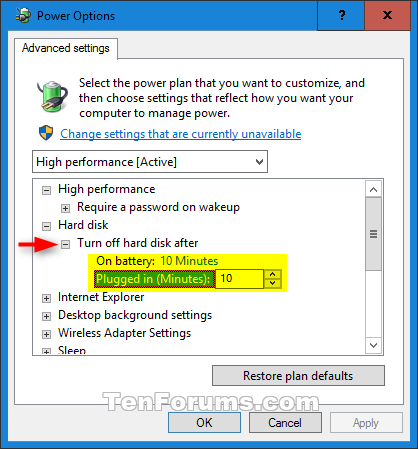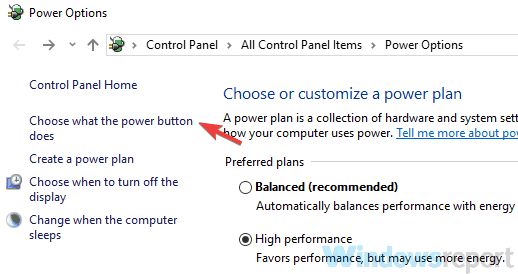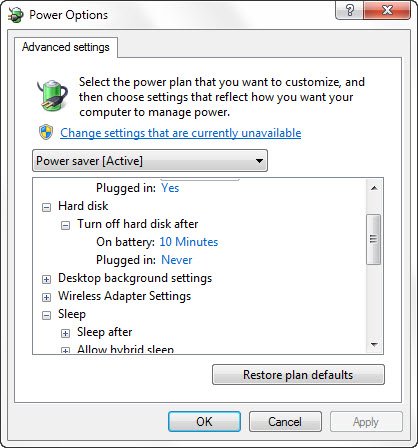Jan 23, 2020 How to Change Turn Off Display After Time in Windows 10 You can specify how long your PC is inactive before all your connected displays turn off. When your display turns off, you would just need to move the mouse, touch the touchpad or touchscreen, click a mouse or touchpad button, or press a key for the display to turn back on. Laptop turned itself off, being an inspiron it was hotter than the sun when touched it to turn it on again. Doing the obvious, when I discovered it wasnt coming back to life again, i set it to rest ontop of some cold tiles on the bathroom floor. After about a half hour I went back to check on it.

A special option in Windows 10 allows the user to turn off the display automatically after a specified period of inactivity. This feature is helpful for those who need to save energy, i.e. if you have a laptop or tablet.
RECOMMENDED: Click here to fix Windows errors and optimize system performance
- Dec 08, 2017 Question Laptop switches itself off after I turn it on, screen dead: Question Laptop screen turning on and off: Question Laptop turns on, shows the loading screen then screen goes black. Question Laptop turns off when unplugged, screen wont turn on when plugged with no battery: Question Laptop screen won't turn on only when plugged in.
- May 31, 2019 1) Turn off the UPS but let the UPS still plugged to main outlet (keep charging the battery) 2) Turn off the UPS and also disconnect it from main outlet (the battery would discharge slowly in this state) 3) Let the UPS keep turned on. I have tried the 1st one, the UPS will keep getting warm while it's turned off.
- Sep 14, 2016 Power Settings in Windows 10: Instructions. To manage power settings in Windows 10, open the “Settings” window. Then click the “System” button in the middle of the screen. Then click the “Power & sleep” category at the left side of this window. The power management and sleep options appear in the.

When enabled, your display will be turned off after your PC is idle for the configured period of time. The monitor screen will become black. The next time you access the device, the screen will show the desktop instantly. Also, it may be your lock screen image.
Tip: see how to add Turn Off Display Context Menu in Windows 10.
To configure Display Off time in Windows 10, do the following.
- Open Settings.
- Go to System - Power & sleep.
- On the right, see the Screen section. There you can set how many minutes Windows must wait before turning off the PC's display.
Note: If your device has a battery, a separate option will appear in Settings, which will allow you to set a separate period of time for the screen turn off action on battery.
Alternatively, you can configure the same option using the classic Power management applet in Control Panel.


Configure Display Off Time using classic Power Options
- Open Settings and go to System - Power & sleep.
- On the right, click on the link Additional power settings.
- The following dialog will be opened. There, click the 'Change plan settings' link.
- In the next dialog, set the Turn off the display option to the desired period of time.
Note: The default value of the option is 10 minutes.
Tip: The Advanced Power Options applet also can be used to set the option. You can open it directly as described in the following article: How to open advanced settings of a power plan directly in Windows 10
In short, execute the following command from the Run dialog or from a command prompt.
Expand the tree to Display -> Turn off display after and set the required amount of minutes. 0 means 'never', so the display will be turned on all the time.
Configure Display Off Time using Powercfg
There is a built-in tool in Windows 10, powercfg. This console utility can adjust many parameters related to power management. For example, powercfg can be used:
- To disable or enable the Hibernate mode.
Powercfg can be used to set the display off time. Here is how.

- Open a command prompt.
- Type or copy-paste the following command:
This will set the screen turn off timeout when your device is plugged in. Replace the SECONDS portion with the required amount of seconds, e.g. 120 for 2 minutes. Again, 0 means 'Never'.
- To configure the same when your device is on battery, execute the command:
Set the required SECONDS value and you are done.
Note that turning off the display does not lock your device like sending it to Sleep or Hibernation does. So while the display is off, anyone can access your unlocked PC. However you can manually lock your PC quickly if you are stepping away using the Win+L hotkey combination. Then the display will be turned off at the logon screen after the specified time interval.
You can view multiple cameras on the screen (as seen below) or switch to single camera enlarged to full screen. Cmx viewer for mac pro.
When Plugged In Turn Off After Not Working
Also, if you have turned on Lockscreen Slideshow, Windows will play it instead of turning off the display. The display will then be turned off according to the Lockscreen Slideshow settings.
That's it.
When Plugged In Turn Off After Christmas
RECOMMENDED: Click here to fix Windows errors and optimize system performance
